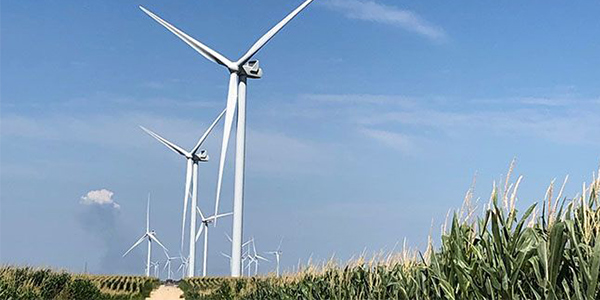FERC last week accepted two previously rejected unexecuted generator interconnection agreements between SPP, Oklahoma Gas & Electric (OG&E) and a pair of wind farms (ER20-2544, ER20–2545).
The two wind facilities, Frontier Windpower II and Chilocco Wind Farm, were part of SPP’s 2016 definitive interconnection system impact study (DISIS). Staff performed five restudies following the initial DISIS as projects dropped out of the GI queue or interconnection points were re-designated.
The fourth restudy identified Wolf Creek-Emporia as a shared network upgrade needed to accommodate the cluster’s interconnection requests. However, the ensuing restudy indicated the upgrade was no longer needed following the Board of Directors’ 2019 approval of the Wolf Creek-Blackberry competitive transmission project.
The latter project is now waiting on FERC approval to proceed. (See “Board Lifts Suspension on Competitive Upgrade,” SPP Board of Directors/MC Briefs: Sept. 22, 2020.)
SPP revised the original GIAs to remove the Emporia upgrade. It said it filed the unexecuted agreements because OG&E disagreed with the proposed cost allocations, which did not allocate any Blackberry project costs to the wind facilities.
FERC rejected the GIA filings in April, saying their cost allocations were unjust and unreasonable because they were based on the Emporia upgrade. In approving the revised GIAs on Sept. 28, it noted they no longer contain the Emporia upgrade and include the Blackberry project as a contingent facility.
The commission reiterated its position that SPP did not violate its Tariff in performing the fifth restudy, pointing out that 13 higher or equal priority queued interconnection customers had dropped out. FERC disagreed with OG&E’s argument that SPP violated the commission’s interconnection-related pricing policy and cost-causation principles by proposing not to assign Blackberry’s costs to the DISIS group.
“SPP’s proposed cost allocation for the Blackberry project is consistent with the [Tariff’s] requirements for cost allocation,” the commission said.
FERC last week also responded to OG&E’s request to rehear the April order on Frontier II, which was automatically rejected when the commission did not respond within 30 days. The commission provided additional discussion but came to the same conclusion (ER19-2747).
OG&E had argued that FERC “failed to support with substantial evidence” its finding that SPP was allowed to undertake the fifth restudy when some of the projects were withdrawn. The commission declined to address the complaints.
The utility also contended that FERC erred by agreeing with an earlier mistaken SPP statement that a planning assessment justified the fifth restudy, arguing that the assessment contained improper assumptions that cause it to ignore the Frontier project’s impact. The commission reminded OG&E that it found the fifth restudy was not flawed, and it said the utility failed to provide evidence supporting its allegations that SPP never provided “specific assumptions” including in the planning assessment.
Frontier II, at 350 MW, is the largest wind project in Duke Energy Renewables’ fleet. It will be paired with the 200-MW Frontier I, which has been operational since 2016.



